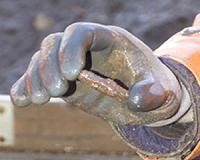 |
Kangerlussuaq, Greenland (SPX) Apr 13, 2011 Operation IceBridge, NASA's airborne mission to monitor polar ice, is amid its fourth week of flights for the Arctic 2011 campaign. Researchers and crew successfully completed flights from Thule, Greenland, to monitor sea ice and have now moved to Kangerlussuaq, Greenland to focus on flights monitoring the ice sheet. Flying a distance of about 19,000 miles [30,000 kilometers] over the Arctic Ocean, scientists onboard the P-3 collected data during eight sea ice flights based from Thule Air Base. One additional sea ice flight remains to be flown from Kangerlussuaq.
Why Fly Sea Ice? The thickness of Arctic sea ice cover is also declining, on average, throughout the satellite record, according to scientists including Joey Comiso of NASA's Goddard Space Flight Center in Greenbelt, Md. Now, after the Ice, Cloud, and land Elevation Satellite (ICESat) stopped collecting data in 2009, IceBridge continues to collect the data scientists need to observe sea ice thickness. The mission's airborne instrument suite collects lidar and radar data making it possible to monitor both the sea ice freeboard and the snow layer on top of the sea ice. Both measurements are important for quantifying the sea ice thickness and predicting the heat exchange between the Arctic Ocean and the atmosphere.
Flight Highlights Then, on March 23, the P-3 flew one of the campaign's most challenging flights - an overpass of the U.S. Navy's ICEX camp, an assemblage of tents and shacks drifting on an ice floe north of Fairbanks. On the ground with ICEX was a team of researchers from the Army's Cold Regions Research and Engineering Laboratory and the Naval Research Laboratory, who established a line that would be surveyed from on, below and above the ice. Comparing measurements from each vantage point helps scientists improve the accuracy of sea ice thickness measurements. Sea ice camps are moving targets, drifting along with the wind and ocean currents. The erratic movement makes for a challenging overflight. "The sea ice moves unpredictably, crazy, like a drunken sailor," said John Sonntag of URS Corporation, and the IceBridge instrument team lead. Just before the mission, the camp was floating north at about 66 feet per hour, but by the time the aircraft was nearby it had suddenly veered east at about 660 feet per hour. The flyover required precise coordination with ground teams before and during the flight. The P-3 returned to Thule on March 25 to complete three more science flights before transiting to Kangerlussuaq, the base of operations for the next few weeks.
Land Ho! Meanwhile, IceBridge scientists are working to complete a series of land ice flights. To date, IceBridge has completed four land ice flights over west Greenland. Weather has been favorable in that area, which is typical. Upcoming land ice missions to southeast Greenland will rely on a bit more luck, as low pressure from the Icelandic low commonly produces clouds in the region.
Share This Article With Planet Earth
Related Links NASA's Operation IceBridge How to Measure Ice Thickness at ICEX CRYOVEX - First Dedicated CryoSat Validation Campaign Gets Underway Arctic sea ice news and analysis Beyond the Ice Age
 Sand Drift Explained
Sand Drift ExplainedStavanger, Norway (SPX) Apr 11, 2011 The sand along the south-western coastal rim of Norway has drifted for more than 9000 calendar years. This was triggered by sea-level changes and human activities, new research has found. Researchers in countries such as Denmark, the Netherlands and Poland study sand drift, but most of them are focusing on sand dunes along the coastline, not on the plains further inland. "Sand dunes ... read more |
|
| The content herein, unless otherwise known to be public domain, are Copyright 1995-2010 - SpaceDaily. AFP and UPI Wire Stories are copyright Agence France-Presse and United Press International. ESA Portal Reports are copyright European Space Agency. All NASA sourced material is public domain. Additional copyrights may apply in whole or part to other bona fide parties. Advertising does not imply endorsement,agreement or approval of any opinions, statements or information provided by SpaceDaily on any Web page published or hosted by SpaceDaily. Privacy Statement |